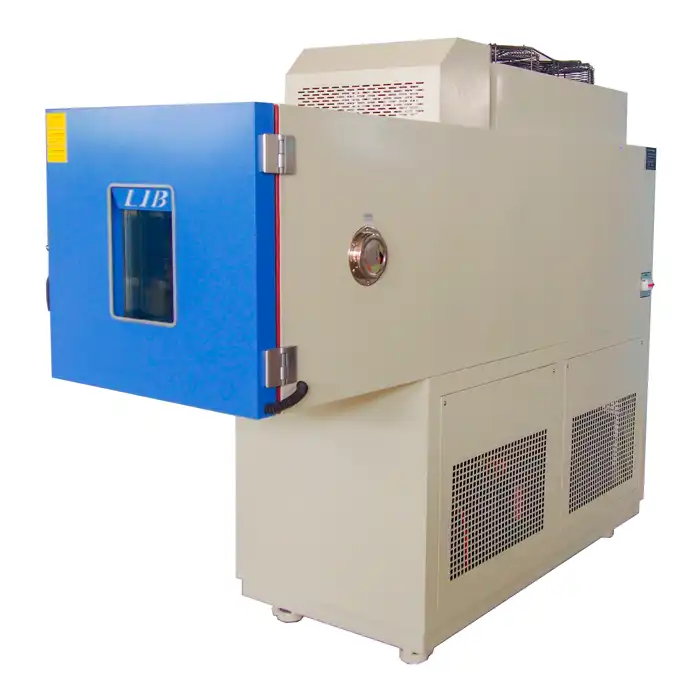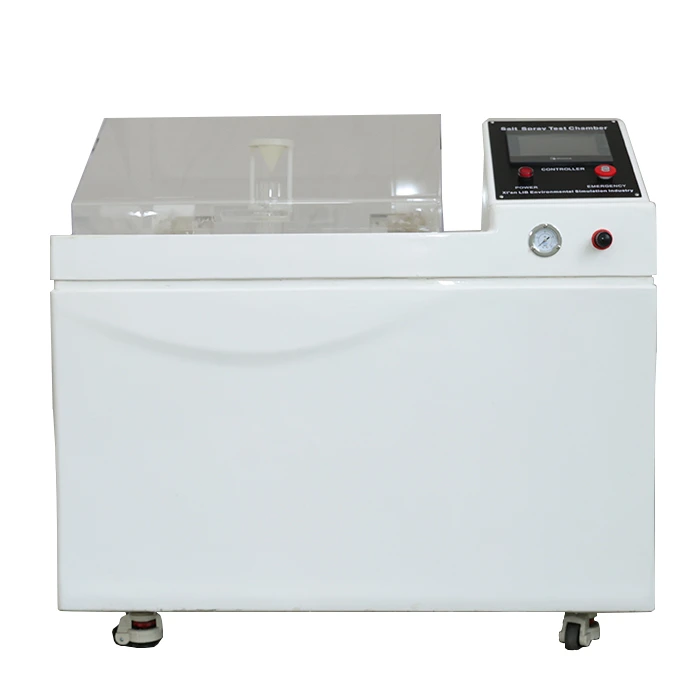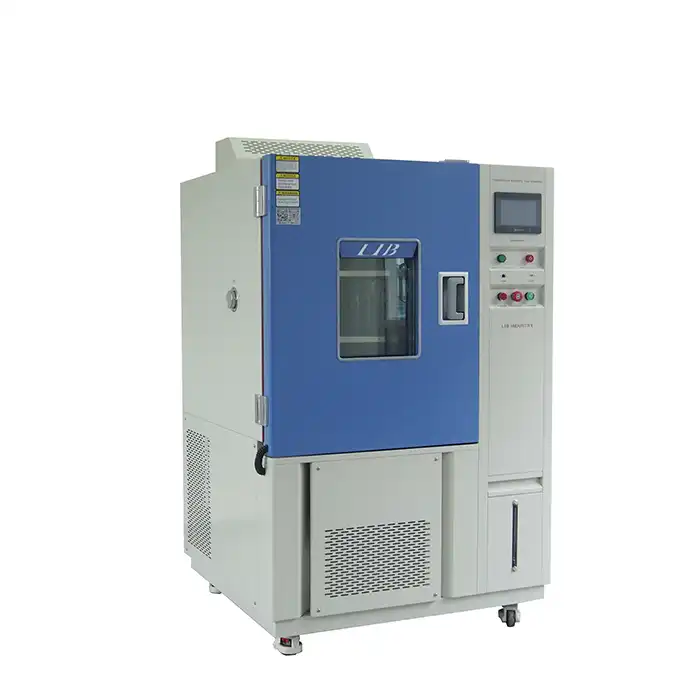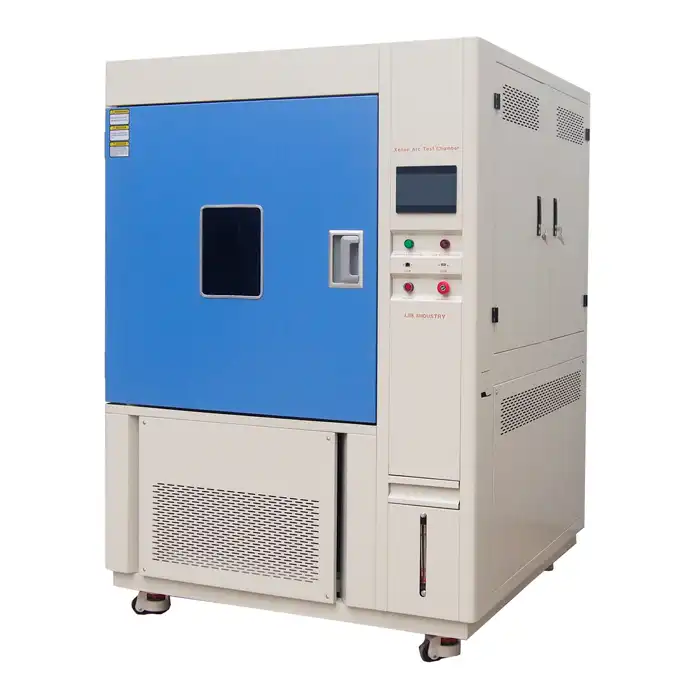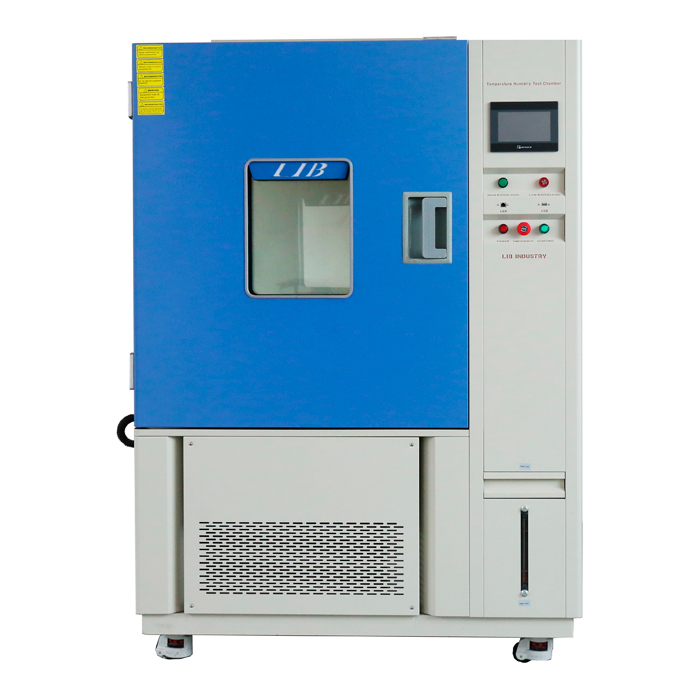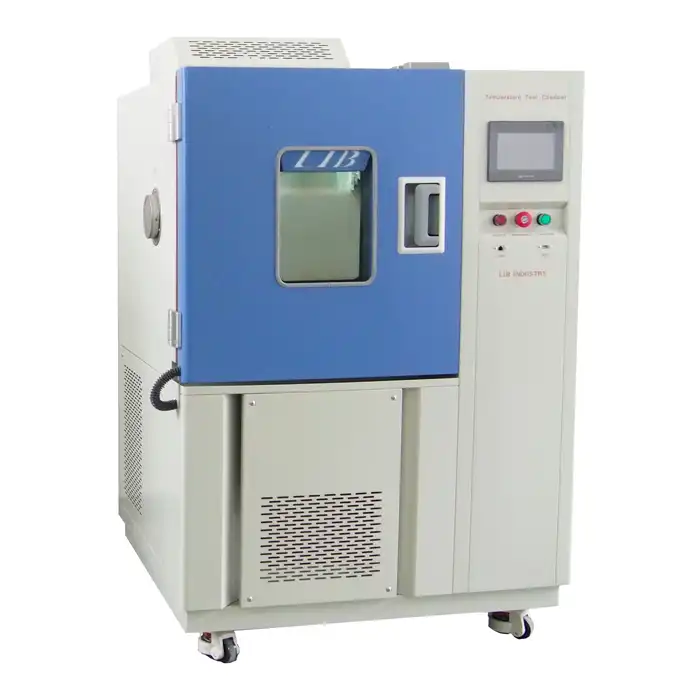Comparison Between Xenon Aging Chamber and UV Aging Chamber
What is a Xenon Aging Chamber?
A Xenon aging chamber uses xenon arc lamps to simulate full-spectrum sunlight, including ultraviolet (UV), visible, and infrared (IR) light. This chamber is designed to mimic natural sunlight as closely as possible, making it ideal for testing materials that will be exposed to outdoor environments. The key features and benefits of Xenon aging chambers include:
Full-Spectrum Light Simulation
Xenon lamps produce a light spectrum that closely resembles natural sunlight, which includes UV, visible, and IR light. This comprehensive simulation makes Xenon aging chambers ideal for testing materials like automotive components, coatings, and textiles.
Adjustable Parameters
Users can adjust the intensity and wavelength of the light, as well as control temperature and humidity. This flexibility allows for precise testing conditions tailored to specific material requirements.
Compliance with Standards
Xenon aging chambers comply with various international standards, such as ISO, ASTM, and SAE. This ensures that test results are reliable and comparable across different industries and applications.
However, the full-spectrum light simulation comes at a higher operational cost due to the energy consumption of Xenon lamps and the need for cooling systems to manage the heat generated.
What is a UV Aging Chamber?
A UV aging chamber, also known as a UV weatherometer, focuses specifically on the ultraviolet portion of the light spectrum. UV light is the most damaging part of sunlight, causing materials to degrade through processes like photooxidation and photopolymerization. The UV aging chamber is designed to test the effects of prolonged UV exposure on materials. Key features and benefits of UV aging chambers include:
UV Light Simulation
UV aging chambers use fluorescent UV lamps to simulate the UV portion of sunlight. This targeted approach is effective for testing materials susceptible to UV damage, such as plastics, paints, and rubber.
Cost-Effective Operation
Compared to Xenon lamps, fluorescent UV lamps are more energy-efficient and generate less heat, reducing operational costs and the need for extensive cooling systems.
Standard Compliance
UV aging chambers also meet various international standards, including ISO, ASTM, and EN. This ensures consistency and reliability in test results across different applications.
While UV aging chambers are less expensive to operate, they do not provide a full-spectrum light simulation, which may limit their applicability for materials requiring comprehensive light exposure testing.
What Are the Key Differences Between Xenon Aging Chambers and UV Aging Chambers?
To decide which aging chamber is suitable for your testing needs, it's essential to understand the key differences between Xenon and UV aging chambers:
Light Spectrum
- Xenon Aging Chamber: Xenon aging chambers are designed to simulate the entire spectrum of sunlight, including ultraviolet (UV), visible, and infrared (IR) light. They use Xenon arc lamps to replicate the full spectrum of sunlight, providing a comprehensive simulation of natural environmental conditions. This capability allows for more realistic testing of how materials will perform under actual sunlight exposure. By mimicking the complete solar spectrum, Xenon chambers can assess the combined effects of UV, visible, and IR radiation on materials, which is essential for applications where materials are exposed to a wide range of wavelengths.
- UV Aging Chamber: UV weatherometers, on the other hand, focus specifically on simulating the UV portion of sunlight. They use fluorescent UV lamps to produce UV radiation similar to that found in natural sunlight. This specialized approach is particularly effective for testing materials that are sensitive to UV light, such as plastics, coatings, and rubber. While UV aging chambers provide a targeted assessment of UV-induced degradation, they do not simulate the visible and IR parts of the spectrum, which may be important for some testing scenarios.
Operational Costs
- Xenon Aging Chamber: The operational costs of Xenon aging chambers are generally higher due to their use of Xenon arc lamps, which consume more energy and generate significant heat. As a result, these chambers require extensive cooling systems to maintain stable temperatures and prevent overheating. The higher energy consumption and cooling requirements contribute to increased operational expenses, making Xenon aging chambers a more costly option for long-term use.
- UV Aging Chamber: In contrast, UV aging chambers are more cost-effective to operate. They use fluorescent UV lamps, which are more energy-efficient compared to Xenon lamps. These lamps generate less heat, reducing the need for elaborate cooling systems. As a result, the operational costs associated with UV aging chambers are lower, making them a more economical choice for routine testing and quality control. The reduced energy consumption also makes them more suitable for applications where cost efficiency is a key consideration.
Application Suitability
- Xenon Aging Chamber: Xenon aging chambers are ideal for testing materials exposed to outdoor environments where they are subjected to the full spectrum of sunlight. This includes applications such as automotive parts, building materials, and outdoor consumer products. The ability to simulate the complete sunlight spectrum allows for a comprehensive evaluation of how materials will respond to real-world conditions, including the combined effects of UV, visible, and IR light.
- UV Aging Chamber: UV weatherometers are best suited for materials that are primarily affected by UV light. This includes items such as plastics, paints, coatings, and rubber, which are often subject to UV-induced degradation. By focusing solely on UV exposure, these chambers can provide detailed insights into how materials will perform under conditions where UV light is the primary factor causing deterioration. UV aging chambers are particularly useful for quality control and research in industries where UV sensitivity is a significant concern.
Test Standards
- Xenon Aging Chamber: Both Xenon and UV aging chambers comply with various international standards, including ISO (International Organization for Standardization), ASTM (American Society for Testing and Materials), and SAE (Society of Automotive Engineers). These standards ensure that the testing procedures and results are consistent and reliable across different laboratories and industries. Compliance with these standards is crucial for validating the performance of materials and ensuring that test results are comparable and trustworthy.
- UV Aging Chamber: Similarly, UV aging chambers also adhere to international testing standards, which ensures that the data generated is reliable and standardized. These standards provide a framework for conducting tests and interpreting results, allowing for consistent and accurate assessments of material performance under UV exposure.
Conclusion
When choosing between a Xenon aging chamber and a UV aging chamber, consider the specific requirements of your material testing. If your materials need to be tested under full-spectrum light to simulate outdoor conditions accurately, a Xenon aging chamber is the better choice despite its higher operational costs. On the other hand, if UV light exposure is the primary concern, a UV aging chamber, or UV weatherometer, offers a cost-effective and efficient solution.
If you want to learn more about this kind of UV Aging Apparatus, welcome to contact us info@libtestchamber.com.
References
1. ASTM International. (2023). ASTM G155 - Standard Practice for Operating Xenon Arc Light Apparatus for Exposure of Non-Metallic Materials.
2. ISO. (2021). ISO 4892-1:2021 - Plastics – Methods of exposing plastics to laboratory light sources – Part 1: General guidance.
3. Snyder, R. G., & Murray, J. L. (2020). "Evaluation of Material Degradation Using Accelerated Aging Tests." Journal of Material Science and Engineering, 17(4), 245-259.
4. Bard, A. J., & Faulkner, L. R. (2023). Electrochemical Methods: Fundamentals and Applications. John Wiley & Sons.
5. Gordon, R. B., & Smith, J. M. (2019). "A Comparative Study of UV and Xenon Aging Chambers for Testing Materials." Environmental Testing and Analysis, 12(2), 112-129.



